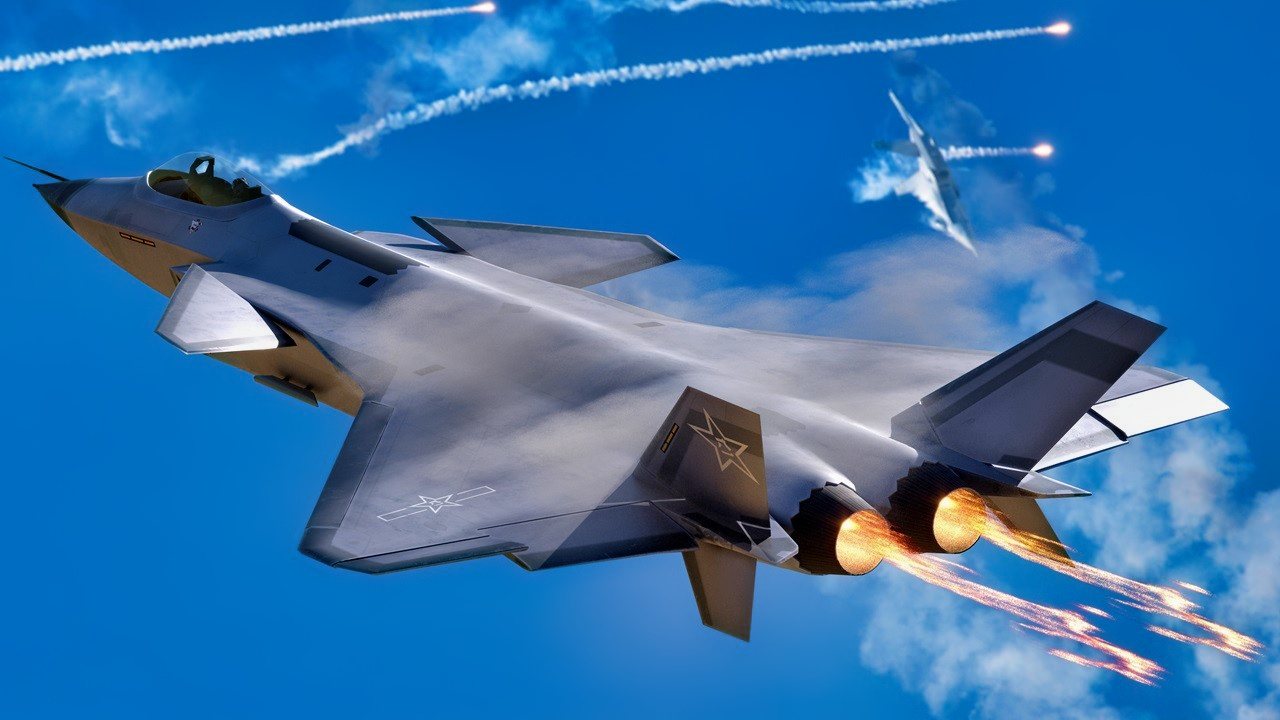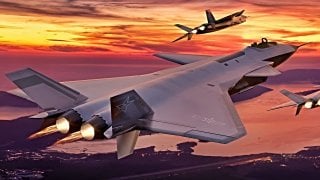China’s New Sixth-Generation Fighter Jet Matters—Just Not How You Think
“China’s sixth-generation fighter aims to create a ‘system of systems’ that would enable it to coordinate with disparate weapon systems and military assets to bypass American technological advantages.”
Headlines are so inundated with stories of Chinese military assets violating Taiwan’s air defense identification zone or of Filipino soldiers confronting the Chinese Coast Guard that we have lost all appreciation for what these stories tactically represent: probing military incursions. Beijing’s violation of airspace or maritime exclusive economic zones is not only a game of political brinksmanship to control resources or gain domestic popularity by picking fights with foreign adversaries (although it is those things, too) but also a means of refining a military doctrine dependent on a host of increasingly sophisticated and coordinated weapon systems.
The conception of the Chinese military that dominates popular culture (a mass force seeking to win through attrition, maneuver, and superior numbers from the Korean War or the Sino-Vietnamese War) is anachronistic. Chinese military doctrine was completely reconstructed after the coalition’s success during the Gulf War. It was a project that lasted over thirty years and is only now nearing realization. Beijing, terrified of the West’s technological edge and integrated warfighting capacity, invested heavily into an active and technologically imbued strategy of denial. This strategy posits that rather than defeating America’s Navy with ships or its Air Force with planes, China should invest in weapons of denial like land-based anti-ship missiles or surface-to-air missile (SAM) nets to close down the battlespace and limit interservice cooperation. This would enable China to capitalize on its quantitative advantages and industrial capacity.
This dynamic is why there is so much media commentary about Chinese hypersonic missiles that Beijing is happy to promote, with even U.S. officials admitting that China has the “world’s leading hypersonic missile arsenal.”
The United States, with its adaptability and technological superiority, could still defeat a peer competitor by employing a strategy of denial. America’s entire military doctrine is designed around opening battlespaces to prevent adversaries from blocking off support. American technological supremacy remains well-rounded rather than over-concentrated in areas adversaries could effectively deny, and the United States has plenty of experience in the suppression of enemy air defense (SEAD) missions. America’s network-centric focus on leveraging information superiority combined with an integrated approach to battle dubbed multi-domain operations means the average American soldier could expect more sophisticated support and inter-service cooperation than previous generations could even imagine.
This rosy tactical assessment is the prevailing orthodoxy in Washington. While this view has merits, it misses two key dynamics.
First, even an unsuccessful strategy of denial could shift battles towards an attritional struggle, resulting in a clash of political will over military casualties between Beijing and Washington that the United States is not in a favorable position to win. Redressing this requires a long-term strategy of multilateral cooperation that positions the United States and its partners on the defensive against Chinese territorial aggrandizement. This must remain a bipartisan endeavor and a pillar of American foreign policy and requires a sincere global commitment to defend the global democratic order.
Secondly, China cannot be expected to employ a static denial strategy. In any hypothetical conflict between China and the United States, Chinese troops will not meekly sit under threadbare SAM nets like the Iraqi Republican Guard. Instead, China will mix a denial strategy with near-peer-level aircraft and ships to frustrate American operational freedom and scramble battlefield priorities that the United States seems ill-prepared to mitigate.
This is vital to note because it recontextualizes the vast assortment of technical analyses on Chinese military equipment that capture headlines. It is true that Chinese aircraft exports have significant problems. Pakistan (a close Chinese ally) has buyer’s remorse for some Chinese equipment, and Chinese avionics are lagging, although comparable, next to the F-22 or F-35. China’s sixth-generation aircraft, supposedly ready by 2035 and more interested in high-speed, high-altitude direct attacks, probably will not actually be “out of science fiction,” as the chief designer of the J-20 imagines. China’s navy, although numerous, still trails America’s by a wide margin in key areas.
None of that matters as much as many believe because China is not playing our game, and the United States should not console itself by pointing to selective marginal technical advantages in military platforms. Chinese military doctrine does not demand that its J-20s or hypothetical sixth-generation aircraft defeat American airpower and sweep it from the skies. China’s navy does not need to rule the waves—it just needs to frustrate American ships and interdict logistics. A failure to consider the operational strengths of an adversary by only focusing on technical capabilities is a fatal mistake. German tanks in 1940 were outnumbered and qualitatively inferior to their French counterparts in almost every single demonstrable technical metric but utilized a superior operational art that rendered those advantages moot.
China’s sixth-generation fighter aims to create a “system of systems” that would enable it to coordinate with disparate weapon systems and military assets to bypass American technological advantages. It purportedly focuses on avionics, coordination, and the “loyal wingman” concept, where drones accompany manned fighters. China does not need its fighters or ships to be better than America’s because that is not its strategy. These aircraft, even if inferior to their American counterparts, are designed to coordinate other assets and alter the battlespace to China’s advantage.
The United States has long had a similar concept of a “family of systems” nestled in the Next Generation Air Dominance Platform (NGAD). Beginning as a result of Defense Advanced Research Projects Agency (DARPA) research in 2014, the NGAD came out of the 2015 Aerospace Innovation Initiative (AII), which, from 2015–2020, concluded that focusing on the constant technical upgrading of aircraft and air-to-air superiority would not realize the long-term demands of U.S. national security.
NGAD would be the next generation of aircraft focusing on doctrinal coordination, revolutionizing air combat as much as jet engines or stealth technology did.
Unfortunately, congressional budget cuts have forced the Air Force to admit that “difficult choices loom” for the NGAD. The Air Force needs to slash funding, but cutting the one system that engages with Chinese military doctrine holistically rather than scaling back on upgrading technology of marginal utility would be folly. Those who advocate upgrading the F-35, especially given recent problems and the report by the Director, Operational Test and Evaluation (DOT&E) group at the Pentagon showing the F-35 program, so relied upon to deter China, only has a fleet-wide full mission capability of only 30 percent, have developed strategic tunnel vision while remaining fixated on technical specifications.

Sober self-reflection is needed to avoid the hubris and technical fetishization that doomed France in 1940. The United States cannot just limit technical metrics and self-analyses to the areas of greatest core competency and declare mission accomplished. Without a wake-up call and a rearrangement of defense priorities that includes funding NGAD, the U.S. military establishment may sleepwalk into disaster and find China’s sixth-generation fighter unexpectedly dominant without being faster, stealthier, or better armed.
About the Author
Wesley Alexander Hill is Lead Analyst and International Program Manager at the International Tax and Investment Center’s Energy, Growth, and Security Program. He is a China and Africa expert. Follow him on LinkedIn.
Images are of China's 5th Generation fighter, the J-20. Photos are from Shutterstock.com.


